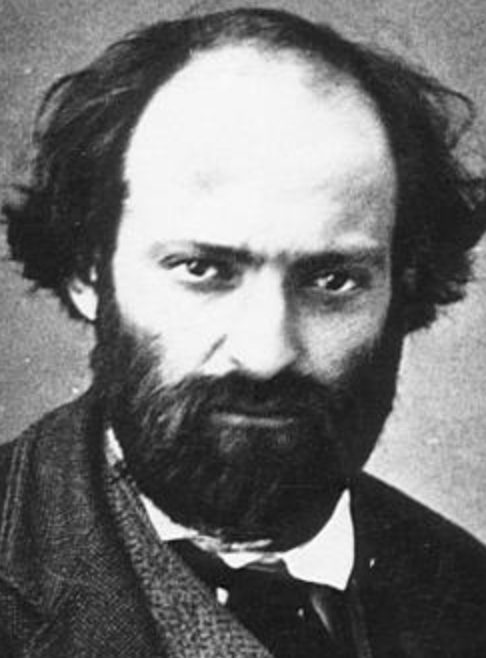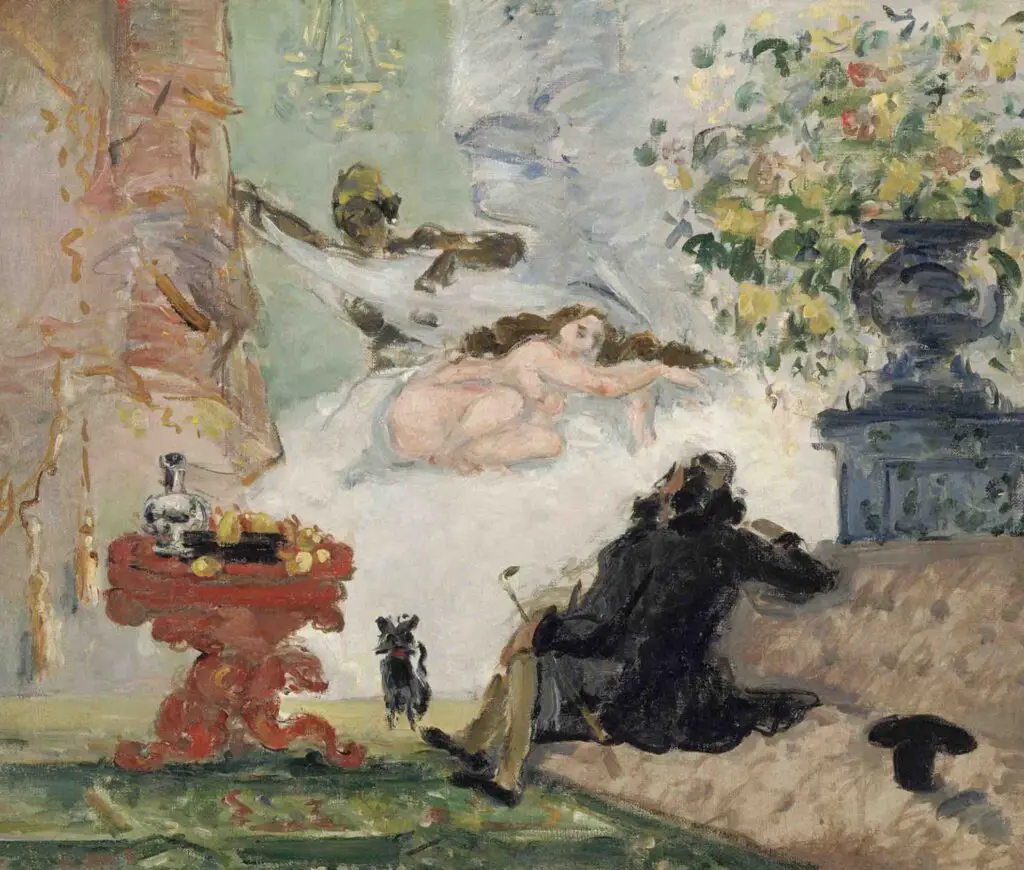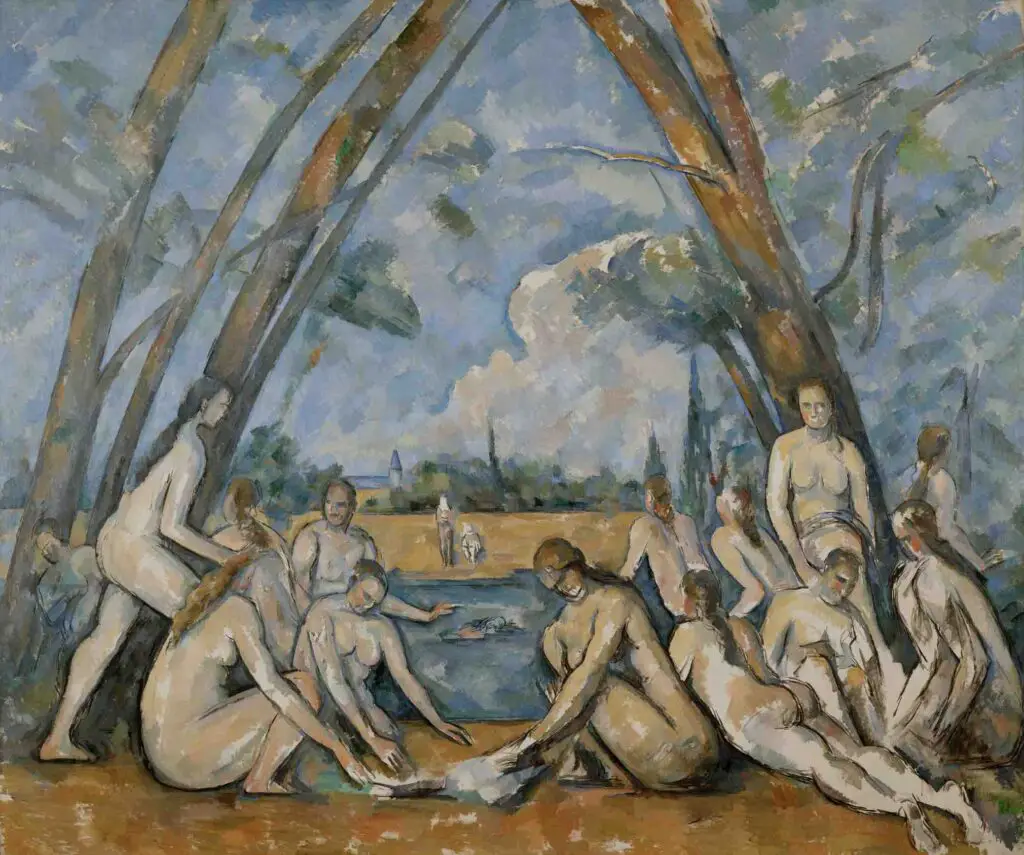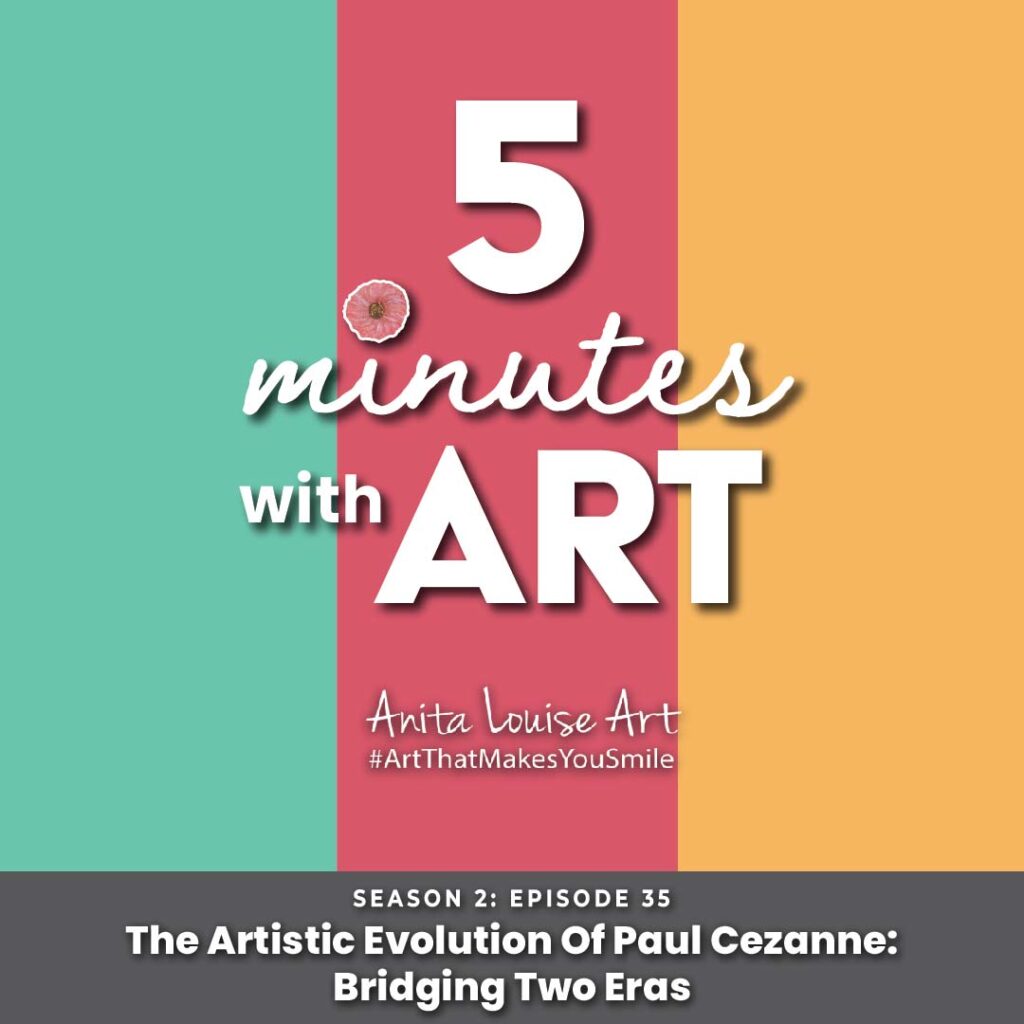Paul Cezanne is long considered one of the greatest artists ever lived. Few artists have influenced the course of art as profoundly as Paul Cezanne, a master of design, color, composition, and draftsmanship.
Paul Cezanne’s artwork served as a pivot, transitioning from 19th-century Impressionism to early 20th-century Cubism, making him a critical figure in the history of modern art. Cezanne’s art is distinctive for its repetitive, sensitive brushstrokes that form complex fields, a clear manifestation of his profound study of his subjects and the complexity of human visual perception.
Table of Contents
- Paul Cezanne: The Bridge Between Two Artistic Eras
- Paul Cezanne: The Enigmatic Pioneer Of Modern Art
- Frequently Asked Questions
- Related Questions
Paul Cezanne: The Bridge Between Two Artistic Eras
Few artists have influenced the course of art as profoundly as Paul Cezanne, a master of design, color, composition, and draftsmanship. His work served as a pivot, transitioning from 19th-century Impressionism to early 20th-century Cubism, making him a critical figure in the history of modern art.

Cezanne’s art is distinctive for its repetitive, sensitive brushstrokes that form complex fields, a clear manifestation of his profound study of his subjects and the complexity of human visual perception.
Not many artists have left as profound an impact on the trajectory of art as Paul Cezanne, a virtuoso of design, color, composition, and draftsmanship. His work functioned as a bridge, guiding the artistic journey from the Impressionism of the 19th century to Cubism in the early 20th century, cementing his place as a pivotal figure in modern art history.
Cezanne’s art is unmistakable with its repetitive, delicate brushstrokes that craft intricate forms, a lucid demonstration of his intense observation of his subjects, and the intricacy of human visual perception. Read on as we explore more about Paul Cezanne and his incredible artistic journey.
Paul Cezanne – Early Life And Inspiration
Born on January 19, 1839, in the southern French town of Aix-en-Provence, Cezanne was the son of a wealthy banker. As a young boy, he developed an intense artistic interest that put him at odds with his father.
It wasn’t until 1862, after many bitter family disputes, that Cezanne was given a small allowance and sent to study art in Paris, where his friend and future novelist, Emile Zola, had already relocated.
In the vibrant art world of Paris, Cezanne was captivated by the radical elements. He deeply admired the romantic painter Eugene Delacroix and the younger masters Gustave Courbet and Edouard Manet. Their realist paintings shocked most of their contemporaries with their unconventional style and subject matter.
Paul Cezanne – Artistic Evolution And The Influence Of Impressionism
Many of Cezanne’s early works were imbued with moody, romantic expressionism. However, just like Zola was pursuing realism in literature, Cezanne gradually developed a commitment to represent contemporary life as he saw it, devoid of thematic idealization or stylistic pretense.
The most influential figure in Cezanne’s artistic evolution was Camille Pissarro. Pissarro not only provided the moral encouragement Cezanne needed, but he also introduced him to the new Impressionist technique.

This style involved painting outdoors (en plein air) quickly and on a smaller scale, using small strokes of pure color, generally without preliminary sketches or linear outlines. Under Pissarro’s guidance, Cezanne shifted from dark to bright hues and began focusing on farmland and rural village scenes.
Paul Cezanne – Struggles, Success, And Isolation
Though seemingly less technically proficient than his contemporaries, Cezanne’s work found acceptance among the Impressionists, leading him to exhibit with them in 1874 and 1877. However, commercial success largely eluded the group, and Cezanne’s work often attracted the harshest criticism.
These experiences led him to distance himself from many of his Parisian colleagues in the late 1870s and ’80s, opting to spend most of his time in his native Aix.
By 1882, he was no longer working closely with Pissarro, and in 1886, his relationship with Zola also soured due to perceived references to his failures in one of Zola’s novels.
That same year, Cezanne inherited his father’s wealth, which offered him financial independence at 47. However, the artist found himself socially isolated.
Despite the challenges and criticism he faced, Paul Cezanne’s dedication to his craft made him a fundamental figure in modern art. His work served as a bridge between two pivotal artistic movements, influencing future generations of artists.

Today, we remember Cezanne not just as a prolific artist but also as a revolutionary who reshaped the landscape of art at the turn of the 20th century. His ability to express his intense study of his subjects and the complexity of human visual perception through his brushstrokes is unmatched, making him an enduring source of inspiration for artists and art enthusiasts alike.
Paul Cezanne: The Enigmatic Pioneer Of Modern Art
Paul Cezanne, a towering figure in the art world, remains a study in contrast: his ambition was unwavering, yet he felt he never achieved his artistic goals.
While he yearned for perfection in his works, he often left them unfinished and destroyed many. This artist was torn between his unparalleled mastery of color and composition and his self-imposed challenges, mainly when depicting the human figure.
Paul Cezanne – Striving For Perfection
Cezanne’s self-criticism was palpable. His works, especially the prominent figural pieces from his later years like “Large Bathers” (circa 1899-1906, housed at the Museum of Art, Philadelphia), display unique distortions. At first glance, these might seem like imperfections.

But on closer examination, they appear to arise from Cezanne’s rigorous color modulation system. However, he saw his shortcomings as the quirks that the subsequent generation of painters embraced.
In a world where Impressionism’s naturalistic approach seemed formulaic, Cezanne’s distinctive style breathed fresh, sincere, and committed life into modern art.
Paul Cezanne – Artistic Recognition And Legacy
For most of his life, Cezanne’s genius remained a secret, known only to his Impressionist peers and a handful of radical Post-Impressionist artists, including Vincent van Gogh and Paul Gauguin. However, the tide turned in 1895 when Ambroise Vollard, a Parisian art dealer with a keen eye for talent, showcased Cezanne’s works. Vollard’s efforts bore fruit, and by 1904, Cezanne’s art graced significant exhibitions.
By the time Cezanne passed away in Aix on October 22, 1906, he had transformed from a reclusive artist to a legend. The latter years of his life saw a stream of younger artists making pilgrimages to Aix, eager to watch the master at work and perhaps glean insights into his artistic philosophy.
Paul Cezanne remains an enigma in the annals of art history. To some, he appeared a naive primitive, while to others, he was a master of intricate techniques. But what’s undeniable is his profound influence on modern art.
Cezanne’s vibrant color palette and seemingly stringent compositional structures signaled a groundbreaking fusion of expressiveness and representation in painting. In embracing both the intense and the systematic, Cezanne charted a unique path that future artists would follow and derive inspiration from for generations.
Listen To Our Podcast About The Artistic Evolution Of Paul Cezanne: Bridging Two Eras Below or by clicking here.

Anita Louise Art is dedicated to art education, great artists, and inspiring others to find and create their art. We love art that uplifts and inspires. #ArtToMakeYouSmile! #ArtToMakeYouHappy!
If you are interested to see any of my art, you can find out more by clicking here. If you are interested in what inspires me and my paintings, you can discover more by clicking here.
We have a free newsletter and would love you to be part of our community; you can subscribe to the newsletter by clicking here. If you have any questions, I would be happy to talk to you anytime. You can reach me, Anita, by clicking here.
Subscribe to our Anita Louise Art YouTube Channel with great videos and information by clicking here.
Join us for our podcast “5 Minutes With Art.” Spend just 5 minutes a week with us to discover and learn about great art and artists. You can find out more about our podcast by clicking here.
Frequently Asked Questions
How did Paul Cezanne contribute to the transition from Impressionism to Cubism?
Paul Cezanne played a crucial role in this transition by exploring new ways of representing form and space. His emphasis on structure, geometric shapes, and a more deliberate approach to composition laid the groundwork for the later Cubist movement.
What artistic principles did Cezanne emphasize in his work?
Cezanne was known for his mastery of design, color, composition, and draftsmanship. He focused on creating a sense of depth and solidity in his paintings through meticulous attention to form and structure.
How did Cezanne’s brushstrokes contribute to the uniqueness of his art?
Cezanne’s distinctive brushstrokes were repetitive and sensitive, forming complex fields in his paintings. This technique reflected his intense study of subjects and a deep understanding of human visual perception.
In what ways did Cezanne’s art challenge traditional artistic conventions of his time?
Cezanne challenged traditional artistic norms by moving away from the spontaneous brushwork of Impressionism. His emphasis on structure and form broke from the conventional representation of space and objects.
How did Cezanne influence the development of modern art?
Cezanne’s innovative approach to composition and form laid the foundation for modern art movements, particularly Cubism. His influence can be seen in the works of artists like Pablo Picasso and Georges Braque.
Can you elaborate on Cezanne’s role as a “master of design”?
Cezanne’s mastery of design refers to his ability to organize visual elements in a harmonious and meaningful way. His meticulous planning and arrangement of forms contributed to the structural integrity of his paintings.
How did Cezanne’s art reflect his profound study of subjects?
Cezanne’s art reflected a deep and intense study of his subjects, often spending extended periods observing and painting the same scene or object. This commitment to understanding his subjects contributed to the depth and complexity of his work.
What are some key characteristics of Cezanne’s color palette?
Cezanne’s color palette was characterized by earthy tones and a subdued use of color. He often used muted hues and explored the interplay of light and shadow to create a sense of volume and three-dimensionality.
How did Cezanne’s work influence later artists beyond the realm of painting?
Cezanne’s influence extended beyond painting, impacting literature and philosophy. His approach to breaking down and reconstructing form inspired a broader reevaluation of perception and representation in various artistic disciplines.
What is Cezanne’s legacy in the art world today?
Paul Cezanne’s legacy is profound, as he is considered a pioneer in modern art. His innovative ideas and techniques continue to inspire artists, and his influence can be traced through various art movements, making him a crucial figure in the evolution of artistic expression.
Related Questions
What Was The Focus Of Renaissance Art?
The focus of Renaissance art was on the classics of Greek and Rome, humanist philosophy, and the study of the human figure. Realism was also an essential part of renaissance art. The great artists of the Renaissance also became great anatomists and studied human beings.
By clicking here, you can learn more by reading What Was The Focus Of Renaissance Art?.
What Is The Importance Of Art From The Renaissance Period?
Renaissance art is essential as it was a time of rebirth and discovery. Artists like Leonardo da Vinci, Michelangelo, and Raphael were at the forefront of that change, creation, and discovery. Renaissance art has influenced art and artists for many centuries and continues to influence artists today.
By clicking here, you can learn more by reading What Is The Importance Of Art From The Renaissance Period?.
21 Top Renaissance Artists And Their Works Of Art
When we speak of top Renaissance artists, we think of the trinity of artists like Leonardo da Vinci, Michelangelo, and Raphael. But besides these three artists, many other influential Renaissance artists remain essential.
By clicking here, you can learn more by reading 21 Top Renaissance Artists And Their Works of Art.

